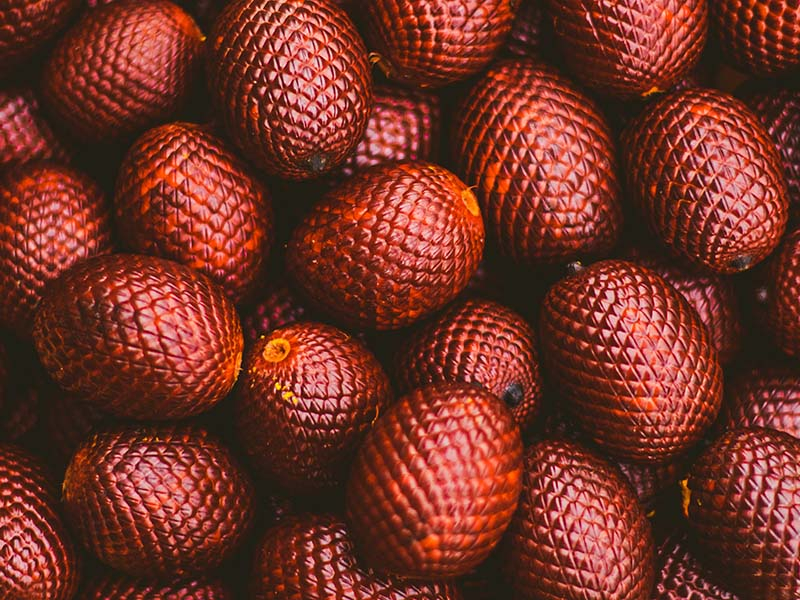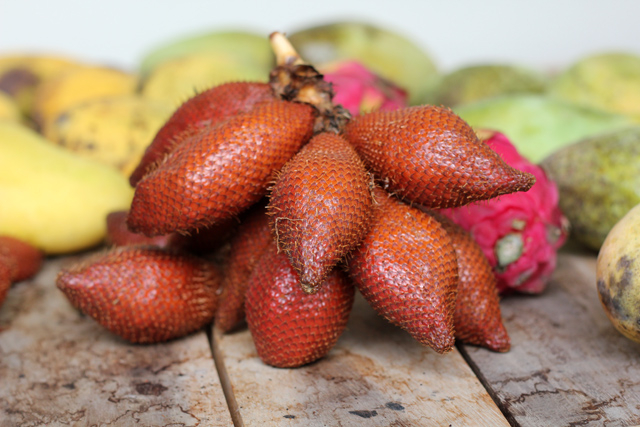Snake Fruit
Snake fruit is in the Arecaceae or palm family, and is botanically classified as Salacca zalacca. It is known as Salak in Malaysia and Indonesia, but its thin, scale-like skin, very similar in appearance to that of a cobra or python, earned it the popular moniker, Snake fruit. There are actually about 30 different types of Snake fruit grown throughout their native land, and while many can be brutally bitter when raw and are used solely in cooking, the commonly cultivated types have a unique, sweet, and sour flavor. This fruit is a favorite food of many bird varieties in the natural environment. Meanwhile, snake fruit will use for making juice, jam, ice cream, or wine. Peru produces over 50 tonnes of aguaje in a day.
Snake fruit has a globular body that tapers to a point at one end and is shaped and sized like a fig. Shiny, dark to light reddish-brown scales that may have tiny spikes on them surround the fruit. The skin is actually quite thin and may be readily pulled off by breaking the tip, despite being scaly and prickly and appearing to be tough. Snake fruit's unique tropical flavor is frequently compared to a combination of apple, pineapple, and banana. It tastes sweet or sour depending on the variety and has the honey-like sweetness of honey with an acidic finish that leaves a zesty tingle on the mouth. Snake fruits grow on short-trunked palm trees, sprouting off the base of the palm in little clusters. The plants have large spiked stems and leaves, which can grow up to six meters long.












